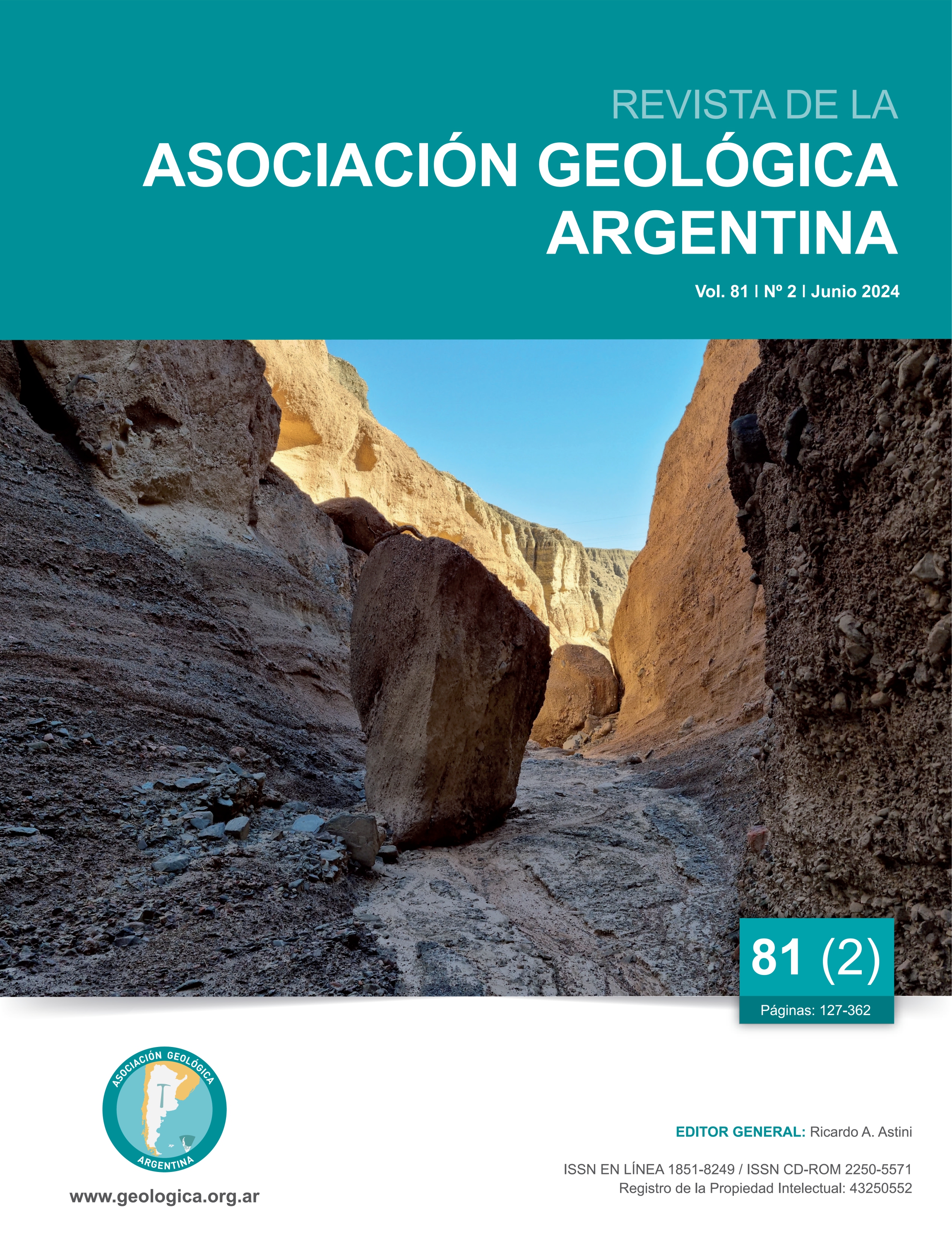The basaltic dykes of the quebrada de Tres Cerritos, sierra de Mojotoro, Cordillera Oriental Argentina, Salta
Main Article Content
Abstract
The petrographic, mineralogical and geochemical characteristics of basaltic dikes that intrude the shales of the Floresta Formation (Tremadocian) in a profile of the Tres Cerritos quebrada of the sierra de Mojotoro, Cordillera Oriental Argentina, are described. These are olivinic basalts with phaneritic texture in macroscopic samples with microporphiric and intergranular textures composed of plagioclase, olivine, titanian augite, biotite, analcime ± apatite ± opaque minerals. They present a selective deuteric and hydrotermal alterations, with olivine replaced by talc and calcite. Besides, these rocks have a complex association of secondary minerals that include: chlorite ± veremiculite ± interlayered biotite/smectite ± interlayered biotite/vermiculite ± interlayered chlorite/smectite. Geochemically, they are classified as alkaline basalts consistent with intraplate OIB (Ocean Island Basalts) type signature. Contents of Rare Earth Elements (REE) normalized to chondrite show a relative enrichment in light rare earths elements (LREE) in relation to the heavy rare earths elements (HREE). A continental intraplate tectonic setting is suggested for the formation of these basaltic dykes although there are no reliable isotopic ages that allow them to be correlated with other basic rocks in the region
Article Details

This work is licensed under a Creative Commons Attribution-NonCommercial 4.0 International License.
Nota de copyright
Los autores conservan los derechos de autor y garantizan a la revista el derecho de ser la primera publicación del trabajo licenciado según una licencia de atribución Creative Commons que permite a otros compartir el trabajo con el reconocimiento de la autoría y de la publicación en la que se publicó por primera vez.
Declaración de privacidad
Los nombres y direcciones de correo electrónico introducidos en esta revista se usarán exclusivamente para los fines declarados por esta revista y no estarán disponibles para ningún otro propósito u otra persona.

